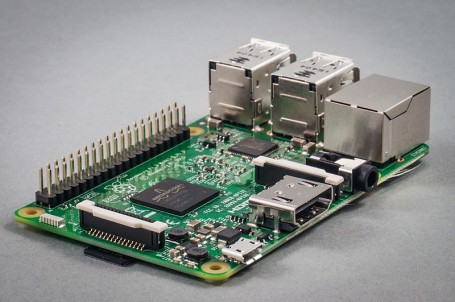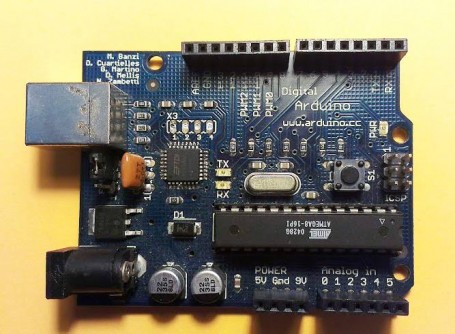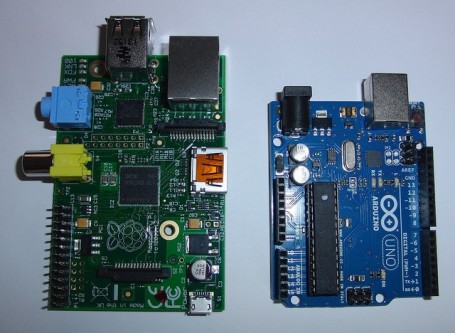Raspberry Pi and Arduino are two valuable tools for those who like to play around with electronics. Both these tools are very popular and are also very pocket-friendly. Each of them has their own pros and cons and also their own particular application. But how to decide which one is better for your projects?
Raspberry Pi is a system-on-chip or SOC. It runs a version of Linux called Raspbian. It also teaches the user while they are working on it. Arduino is a micro-controller that has a hugely supportive community and a lot of expansion options as well. On the release of Raspberry Pi, it was speculated that Arduino might end now. However, Raspberry Pi and Arduino perform different tasks and both have their disadvantages and advantages over each other. Let’s have a look at Raspberry Pi and Arduino one by one to develop an understanding of them.
Raspberry Pi

The Raspberry Pi is a small computer on one board. It has a delicate processor, memory, graphics driver and input outputs like HDMI port. It runs a specially designed version of Linux on it. Linux software is very easy to install and it can be used as a media streamer or video game emulator with a little effort. Raspberry Pi lacks internal storage but you can use an SD card to overcome this problem. It gives you a lot of flexibility to try various operating systems and updates. Especially when it comes to debugging.
You can run multiple programs on it at the same time and can even use the Linux API as well. You can interact with the programs using a mouse and a keyboard and can see the operation on a monitor. Raspberry Pi can be set up using SSH or transferring files using FTP. It can also be used as a network bridge.
https://youtu.be/9YhTOUu06EY
Pros of Raspberry Pi
- It can be easily connected to the internet
- It has the entire Linux software available
- It can be programmed in many languages
Cons of Raspberry Pi
- If CPU slows down the hardware interface gets delayed
- It lacks the power to drive inductive load
- It lacks an inbuilt analogue to digital converter
- Its hardware is not open source
Arduino

Arduino board is actually micro-controller unlike Raspberry Pi which is a full computer. It lacks a full operating system but can run a written code which is interpreted by its firmware. This makes the user lose access to the basic tools an OS provides but at the same time it also gives the flexibility to run the code directly without any OS overhead. It has no API and doesn’t provide any interactivity since there is no operating system. Arduino is best to use with sensors and other devices. It is also best to be used with hardware projects where sensor readings or other inputs are required to perform any task.
It might not impress you initially but it is a very sophisticated system which gives excellent management of devices. It can be interfaced with other devices where a full OS would be overkill for performing relatively simple tasks.
https://youtu.be/eJg3yuAAawA
Pros of Arduino
- It is easier to use.
- It is best to use for real-time applications of hardware, software and IDE is also open source.
- Advance programming knowledge is not required for basic applications.
- It can be extended easily and it has a lot of shields and libraries contributed to it.
Cons of Arduino
- It’s not as powerful as Raspberry Pi
- It can be programmed using only Arduino or C/C++
- It is a little tricky to connect it to the internet. The data can be passed using YQL or JSON
The choice to pick between Raspberry Pi and Arduino depends upon what you need for your project. If your project requires you to interface many hardware devices, Arduino is your best choice. But if you need to run many complex software at the same time, you should go with Raspberry Pi.
For tasks that need sensor data and reaction in real time, Arduino is for them. It also has a low power and low maintenance requirements. It is ideal for the projects which need to run constantly without or with a little interaction.
Raspberry Pi should be considered when a personal computer is also involved to run the task. The Pi simplifies the project when many operations are required to be managed. This involves connecting to the internet and performing the reading and writing of the data. It can also include connecting to an external display and displaying media of any kind.
Both these devices are also needed together for some projects or tasks. There are many ways to interact the two with each other. This setup gives the client side access to the settings and the code to the Pi. This also gives Arduino the option to gather data on its own using the sensors and reacting to it. They can be connected using USB port, local internet network and through IO ports on the Arduino and Pi.
There is not a huge difference between Arduino and Raspberry Pi but it is still important. You can link Arduino to your spinal cord to make a small-scale local decision while the Pi will be connected to the brain. By making correct connections and programs you can take advantage of both of these devices in your project at the same time.


